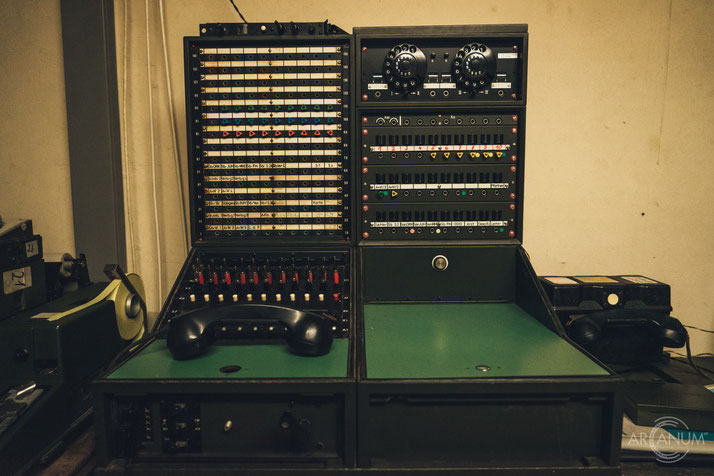Civil Defense Warning Station II
In July of 1951, the Western Allies agreed that Germany had to build a civil air defense system.
The Department of the Interior set up the committee for air defense in November of the same year, which in 1953 merged into the Federal Office for Air Defense.
In 1954, the German constitution was changed in order to give the government the authority to build a civil defense.
Integral parts of the civil air defense since 1956 were the ten so-called "Warnämter" (Warning Offices).

These were tasked with
- issuing warnings during a state of defense by sirens and over the radio
- issuing the all-clear-signal with sirens and over the radio
- maintaining a constant flow of information to critical administration and industry operations
The "nerve center" of each warning station was the huge two-floor Operations Room in which numerous communication seats and ABC-Situation as well as general warning charts were located.
Here, all the relevant data was collected and used to make decisions concerning public warnings and information.
Here, all the communication took place in the direction of the affiliate state or district governments but also to all the data suppliers.
Among these data suppliers were "in-house" services such as the liaison to the NATO's situation rooms and the warning service's measuring points as well as organizations like the German Meteorological Service and the German Flight Control Office.
In the situation room, the ABC- and air situation was constantly tracked on huge charts. These were first made of paper, later from glass and had a size of about 5x5 meters.
The draftsmen had to draw from the rear side of the map to guarantee an unimpeded view for the personnel.
On the basis of the collected data, the director of the warning station made decisions concerning the alert status for the population in his warning
area and also about the contents and about the nature of the alarm.
The shelter was designed to be able to operate independently for at least 30 days. In order to achieve this, it was constructed with its own
independent water supply from two deep wells, two emergency generators with a power output of 120 kVA and 30 kVA, climate control and ventilation system with switchable sand and room filters.
There was a kitchen with supply room and cooling room for perparing the meals of the personnel and a sick bay for injured or sick personnel.
Here's the list of rooms to put into the warning station shelter according to the 1962 construction program for the air defense service:
- the warning service including the necessary intelligence facilities
- the utilities and engineering (climate, generators etc.) and the related supplies
- accommodation for a staff of 196 persons (60 men, 136 women), of which are: 16 full-time employees (12 men, 4 women) and 3 shifts, each with a staff of 60 (16 men, 44 women with seperate sleeping and recreational rooms). In case of defense, the beds for the shift personnel have to be used three times a day (eight-hour shifts). Reserve beds have do be provided to account for changes in the ratio of men and women in the personnel
- the kitchen for shift operation and supply rooms
- a sick bay including decontamination rooms
- double door systems
- sanitary installations, hallways, secondary rooms
All ten warning stations in germany were designed the same way.






















































































